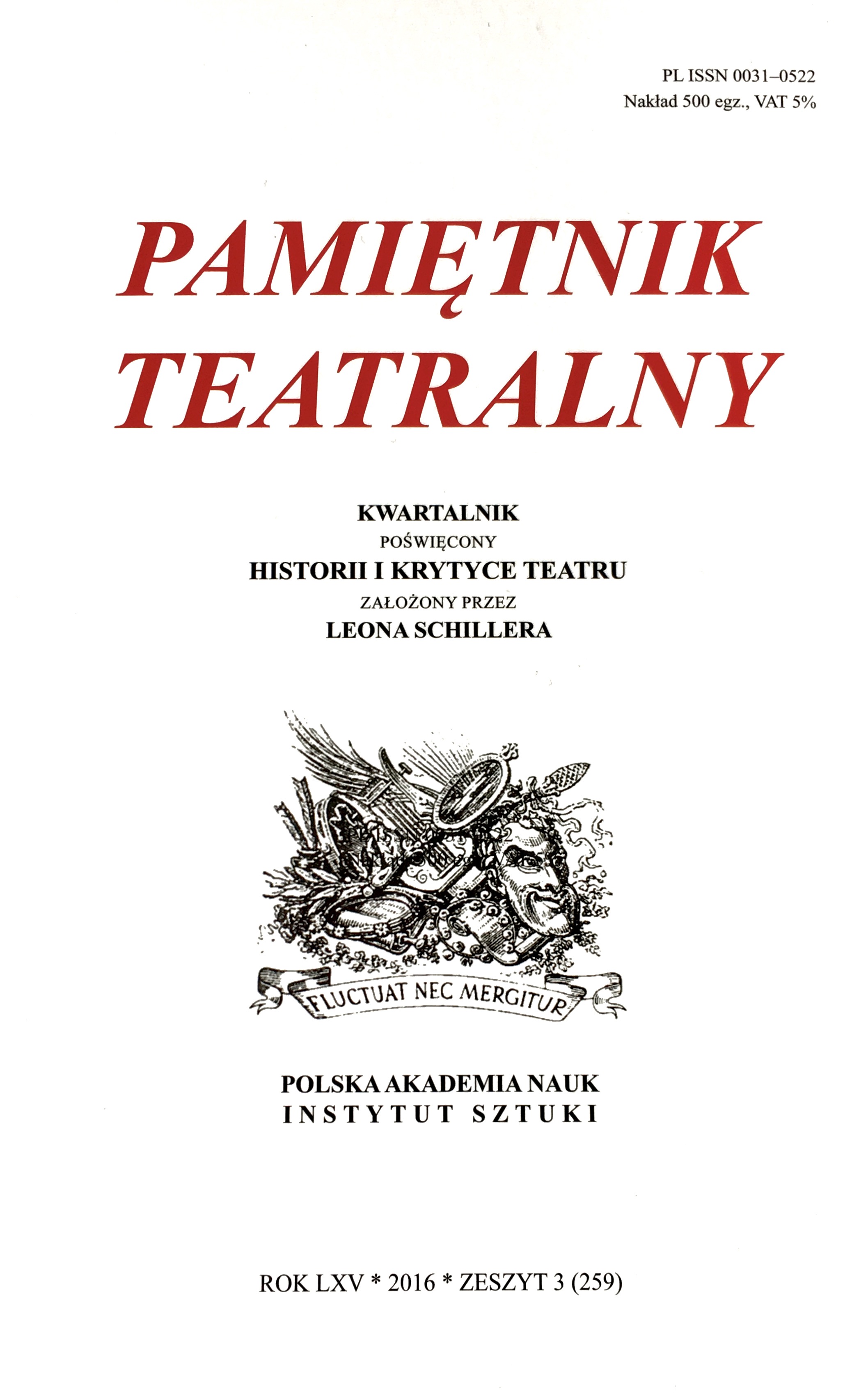Metafizyka jako metateatralność?
Metaphysics as Metatheatricality?
August Strindberg’s To Damascus I
Author(s): Lech SokółSubject(s): Theatre, Dance, Performing Arts
Published by: Instytut Sztuki Polskiej Akademii Nauk
Keywords: Strindberg;metatheatre;
Summary/Abstract: For a few decades now, various interpretations and readings of the To Damascus dramatic trilogy by Strindberg have been focusing either on the whole work or just on its first part; in this case, I side with the latter tactic. Firstly, I assume as obvious, though, at the same time, as profound and well argued, the proposition advanced by Egil Törnquist that the trilogy is a religious and metaphysical text as well. The character of the Invisible One (Den Osynlige), who is an imaginary representation of God, is essential for this line of thought, and for me, too, the character not making an appearance on stage is of paramount importance. I use the term “metaphysics” in its most widespread and predominant sense of the general theory of being, yet I reserve the right to make use of the specific sense described by the French philosopher Frédéric Nef, an author of a 2004 book on metaphysics, who writes under the entry for metaphysica specialis as follows: “it is divided into rational psychology, rational cosmology, and rational theology, which is a study of kinds of being (psychic, cosmic, divine).” Törnquist locates the metaphysical problematics in the characters of the drama, and his method might be described a “metaphysics through reference to topos, or better yet: topoi.” As we know, Strindberg projected the psyche and emotional distress of his protagonists, which usually meant also: his own, onto such personages as: Saul (Paul), Cain, Lucifer, the old-Scandinavian god Loki, the devil, Adam, Jacob wrestling with the angel (God), and so on. Events, clearly, are important as well, like the Jacob’s wrestling just mentioned as well as the story of the temptation and fall of man, which is probably dealt with in most detail in the first part of the drama, etc. Törnquist usually refers to rich scholarship on the drama and to his own, usually very incisive, intuitions. My task is, therefore, not to delineate yet another path through the myriad of Biblical topoi that are present in the Western culture. I am, on the other hand, preoccupied with the presence of metaphysics in the world presented in the drama, with the way it makes its appearance—through a kind of invasion or aggression. Perhaps the most evocative and violent example of this is what happens at the end of Scene 1, on a street corner, in Act I. Strange things are happening, indeed, things radically contrary to reason, that fill with utter terror the characters deemed to be real and sound of mind. What they are experiencing is something called mysterium tremendum and mysterium fascinans. In my conclusion, I go back to the issue of metatheatricality as elaborated by Tadeusz Kowzan in Théâtre miroir. Métathéâtre de l’Antiquité au XXI-ème siècle (2006) and express the opinion that metaphysics in drama and theatre may appear as metatheatricality. Am I right?
Journal: Pamiętnik Teatralny
- Issue Year: 259/2016
- Issue No: 3
- Page Range: 135-150
- Page Count: 16
- Language: Polish

